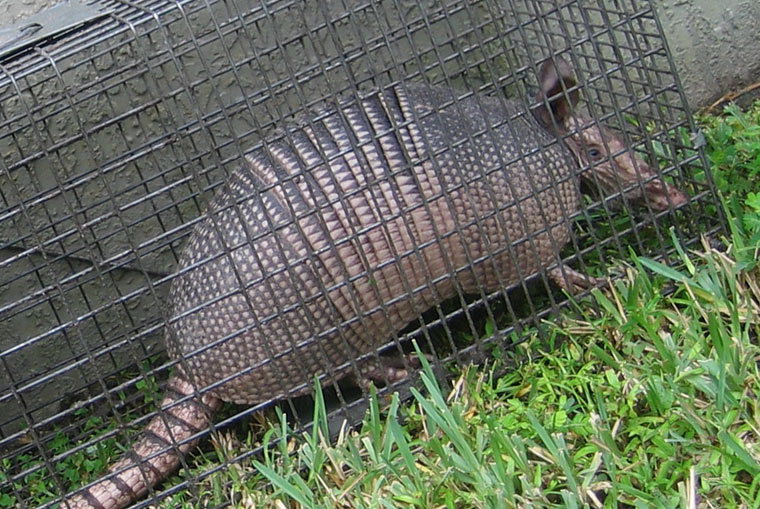-
info@aaanimalcontrol.com
Call us for help in your town
Humane Wildlife Education
Can armadillos transmit leprosy to people?
Need wildlife removal in your hometown? We service over 500 USA locations! Click here to hire us in your town and check prices - updated for year 2020.
We'll get to the heart of the matter here and say yes, armadillos CAN transmit leprosy to people. Hansen's Disease, the other name for leprosy, is a disease that isn't yet entirely understood. We know that it is contagious and can be passed from person to person, but how that transmission happens is still relatively unknown.

Many experts believe that sneezing and coughing holds the key. When this occurs, the bacteria that is responsible for leprosy is then distributed into the air, where it can then be inhaled by other people, or even other animals, such as the armadillo.
Bearing this in mind – the disease is passed on through airborne bacteria released after a cough or sneeze – it has been said that it would take a long time for the disease to be passed from human to human in this way. In fact, it has been said that a fit and healthy adult would need to spend a considerable amount of time with an infected individual before the bacteria would be passed on, in some cases, over many months.
There are a number of myths and rumors surrounding leprosy, which doesn't make understanding it very easy. For example, people believe that leprosy can be passed from human to human by just having the tiniest of contacts, such as shaking hands or giving an infected individual a hug. You cannot pass on or catch leprosy in this manner.
Other rumors that we have read about leprosy on the internet include catching the disease from someone you sat next to on a bus, and even eating a meal at the same table. Once again, both of these are entirely fictional. You can't catch leprosy in either of these ways. As we have established, it takes inhaling bacteria from a sneezing and coughing individual for many months before infection would happen. Although, admittedly, we do need to take you back to what we said previously about the disease itself not being entirely understood.
In this respect, leprosy has the potential to be very dangerous. We don't know how the disease is passed on, but we can hazard a guess – what we have said above. The fact that we don't know is what makes the situation potentially deadly, however, as there could be a way of transmitting the bacteria, and therefore the disease, that we haven't yet encountered. On top of that, many diseases can evolve, particularly when bacteria and viruses are involved. Common diseases and conditions are now becoming immune to the antibiotics prescribed to treat them, making certain complaints all the more dangerous.
Studies in the United States have shown that some animals have the potential to carry the bacteria that has been known to cause Hansen's disease, otherwise known as leprosy. One of these animals is the armadillo, and although the chances of the animal passing it on to you are incredibly low (because of the slow-moving nature), the risks are still very much there and should be remembered when you are dealing with the removal of a wild animal like the armadillo.
The bacteria that causes leprosy are very slow moving and this is what makes it hard to pinpoint exactly where the infection started. It is not believed that there have been any cases of armadillos transmitting leprosy to humans, there is still a very real chance that it could happen. This would be even more so the case if you were to live in the same building as an armadillo without knowing it was there. Homeowners can often miss wild animal invaders until the problem has gotten virtually out of hand, and that's the point they normally call in the professionals – people like me.
Leprosy within the United States is now quite rare, and although it is even more rare that you should catch the disease by coming into contact with an armadillo, we would still recommend NOT coming into contact with the animal at all. With any wild animal, in fact. Leprosy might not be something to concern yourself with, but armadillos, and many other wild animals, also carry and transmit a wide range of other diseases and parasites, none of which should be welcome in your home. This is even more so the case if you have other animals, such as pets, kids, and also the elderly or those who are sick.
For more information, you may want to click on one of these guides that I wrote:
How much does armadillo removal cost? - get the lowdown on prices.
How to get rid of armadillos - my main armadillo removal info guide.
Example armadillo trapping photographs - get do-it-yourself ideas.
Armadillo job blog - learn from great examples of armadillo jobs I've done.


















